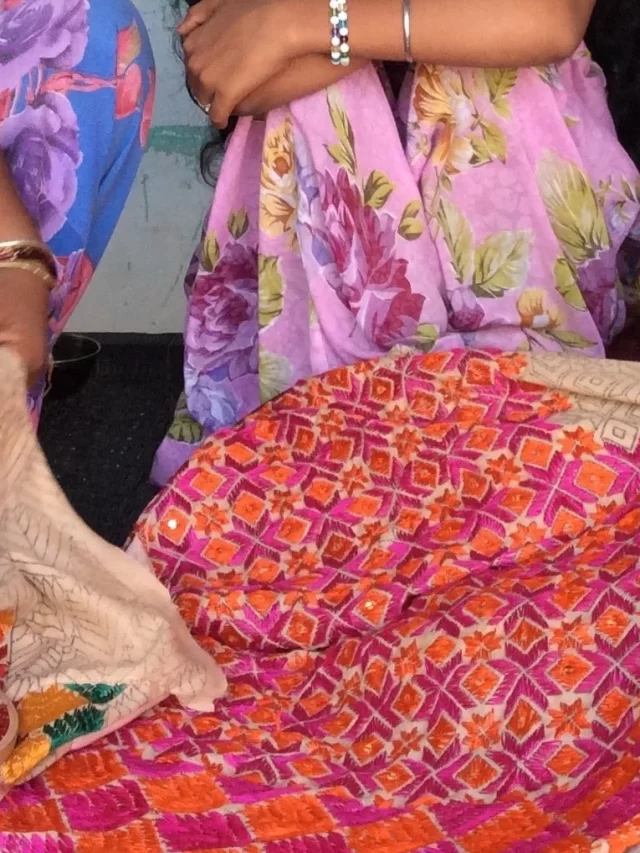Phulkari of Punjab Embroidery
Phulkari baari baari,
Kithay gulab da phool,
Haray haray ni,
Kithay suhaagan da ghoonghat,
Laal laal ni.
Translation: Phulkari made stitch by stitch, where the roses are green in colour while the veil of the bride is red.
These are some verses of a folk song that signify the making of a Phulkari piece.
Phulkari Embroidery
This is the story of Phulkari and how it reflects women’s agency and empowerment in the region. Phulkari embroidery was a marker of the routines that women followed, their lives and the embroidered motifs. Phulkari is a traditional embroidery that hails from Punjab, where women adorn their shawls, dupattas, clothes and fabric with stylized floral motifs and geometric forms with silk threads. It is the amalgamation of two Sanskrit words ‘phul’ meaning flower and ‘kari’ is to do. In a traditional sense, Phulkari of Punjab embroidery also represented a typical Punjabi woman’s life, wherein the grandmothers and mothers start to embroider right from the birth of a daughter for her wedding trousseau and train her to do so as well.
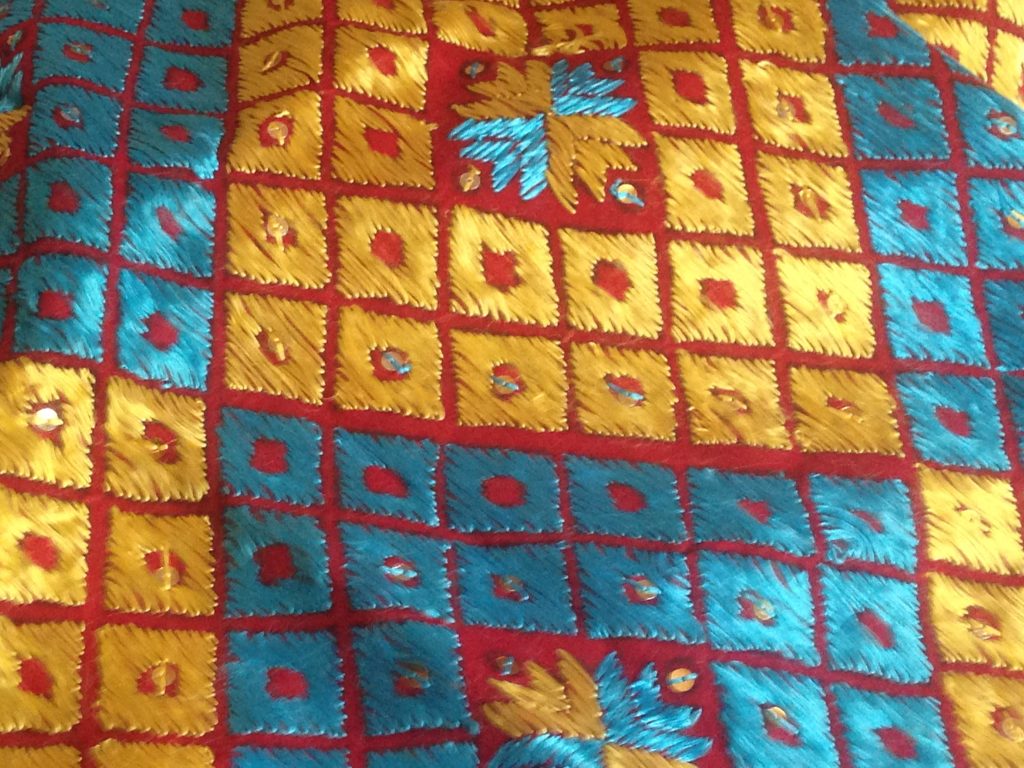
Although the origins of hand embroidery Phulkari dupatta are not entirely known, they seemed to traditionally be an extension of covering one’s body and face and were made to conservatively dress the women’s bodies and to be modest in their clothing. Phulkari embroidery was something that began as a domesticated art form that women did to pass the time and to reflect their understanding of the world, soon became a symbol of the state and a popular craft tradition in India.
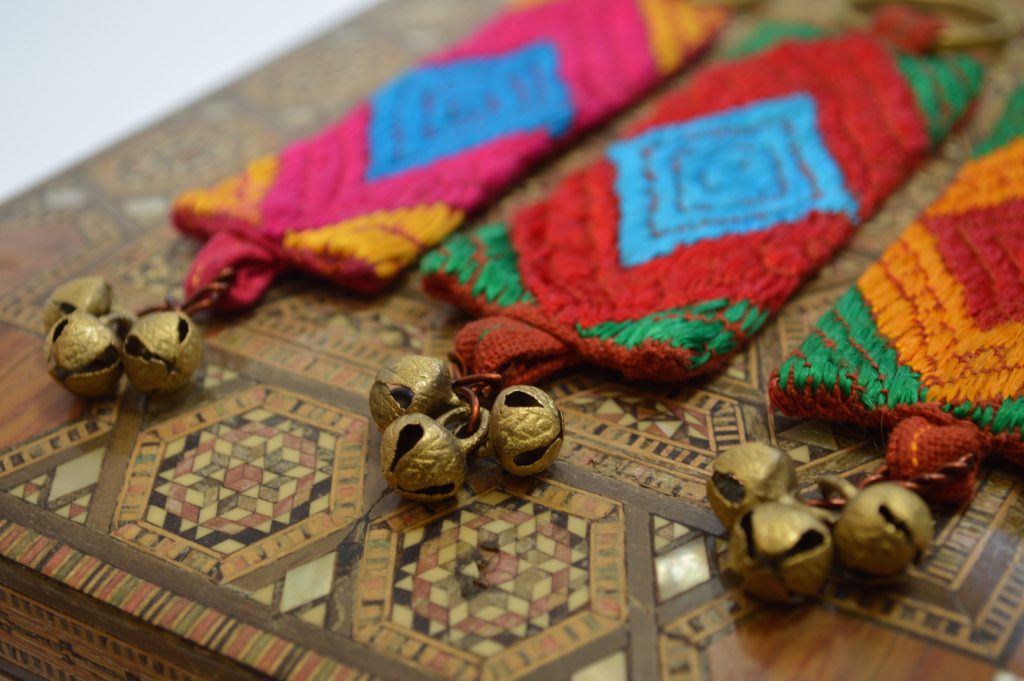
The Colours in Phulkari Embroidery
The colours used in a Phulkari embroidery design symbolize specific moods, emotions and values of women, with red being the highlight signifying love, and sexual union between a man and woman and also showcasing power and passion. The colour is, hence, often used in the ‘odhni’ of women’s bridal trousseau. Blue is another hue which is very important for Indian women as it is associated with Lord Krishna, the divine lover, it also expresses deep longing. Golden yellow is the colour of ‘Basant’ and signifies the mustard fields, while green showcases fertility and growth. The threads in a Phulkari embroidery are coloured silk threads of a variety of shades that help stitch a variety of floral and geometrical motifs.
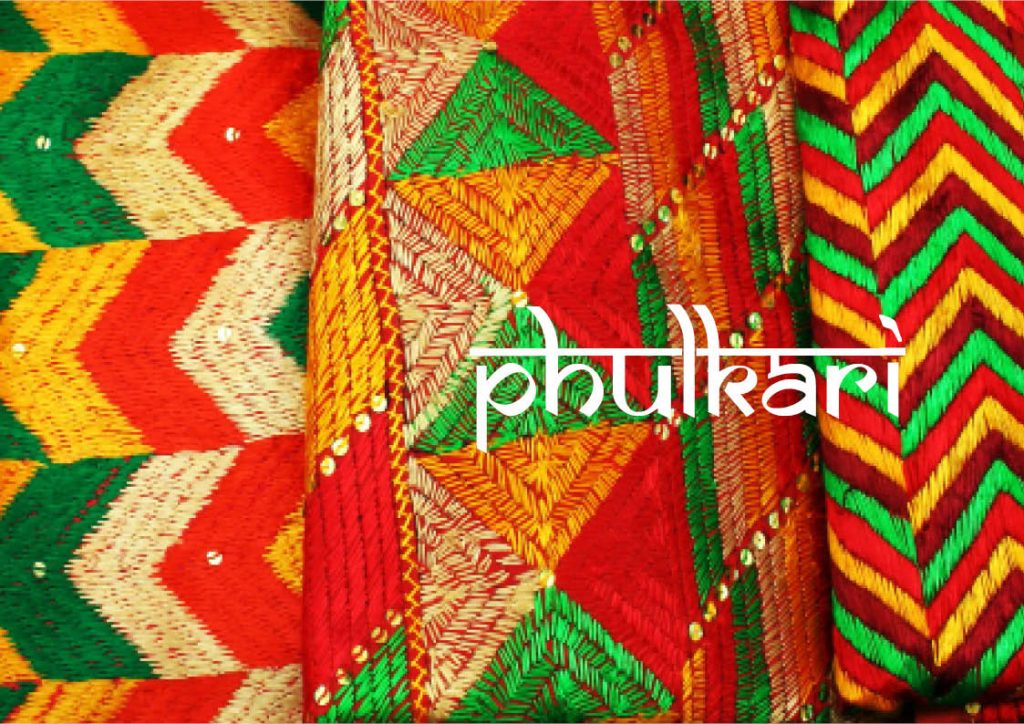
Making of Phulkari Embroidery Dupatta
There exist numerous types of Phulkari embroidery. A popular variety, Bagh is often embroidered on a coarse cotton cloth called ‘Khaddar,’ which has a smooth surface. All varieties of cotton that are used for making the Phulkari are sourced locally from the cultivation of raw material to spinning yarn and weaving. Tilling on the land is done by the males and women are involved in other processes of making Phulkari embroidery dupatta.
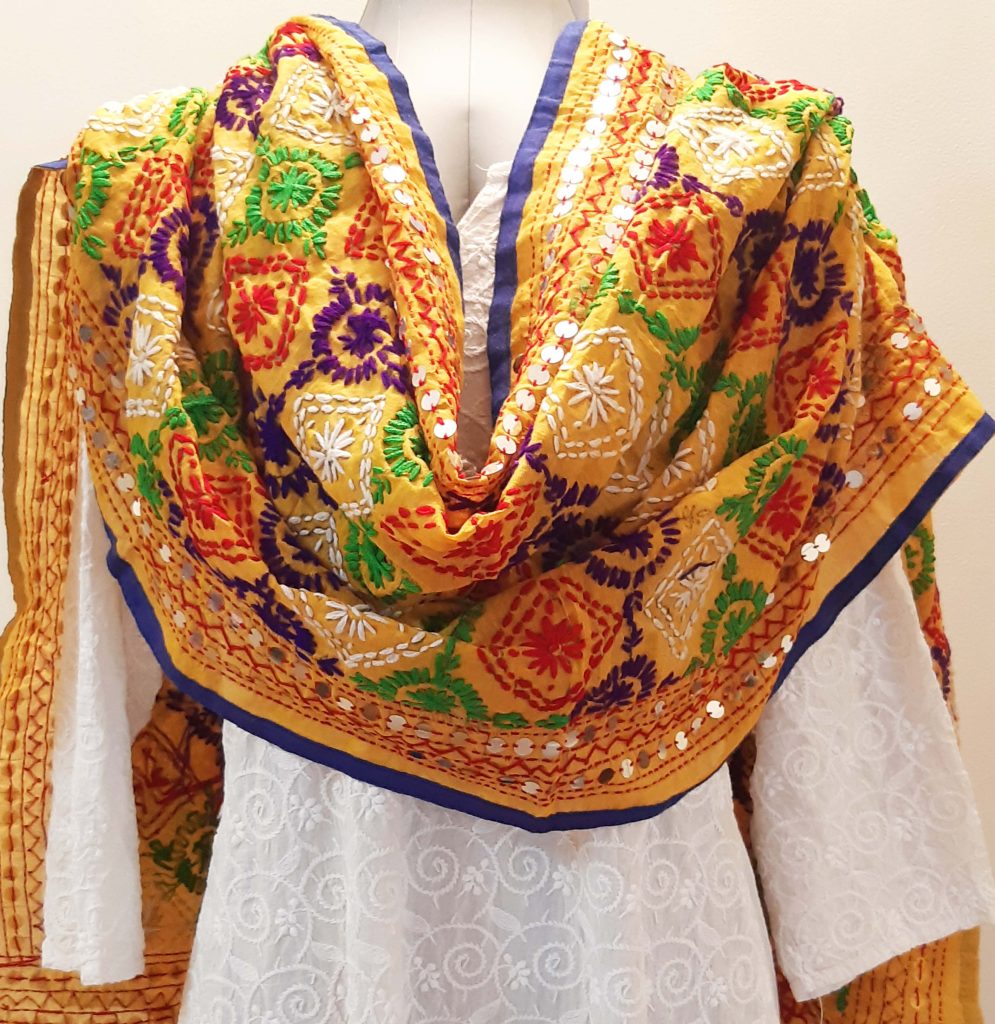
Phulkari Embroidery Motifs
Phulkari embroidery is more than a practical veil and beautiful embroidery; it is also a sentimental piece of fabric that is associated with various rites of passage and signifies notions of womanhood in the state. It is an heirloom that is passed down from grandmother to their daughters and granddaughters. Girl learns the art of embroidering a Phulkari embroidery designs from their mothers, when they are skilled enough, it is believed that they have transitioned from being adolescents to women. Different rites of passage have separate Phulkari embroidery motifs. It is a living tangible piece of craft that represents marriage and its role in a woman’s life.
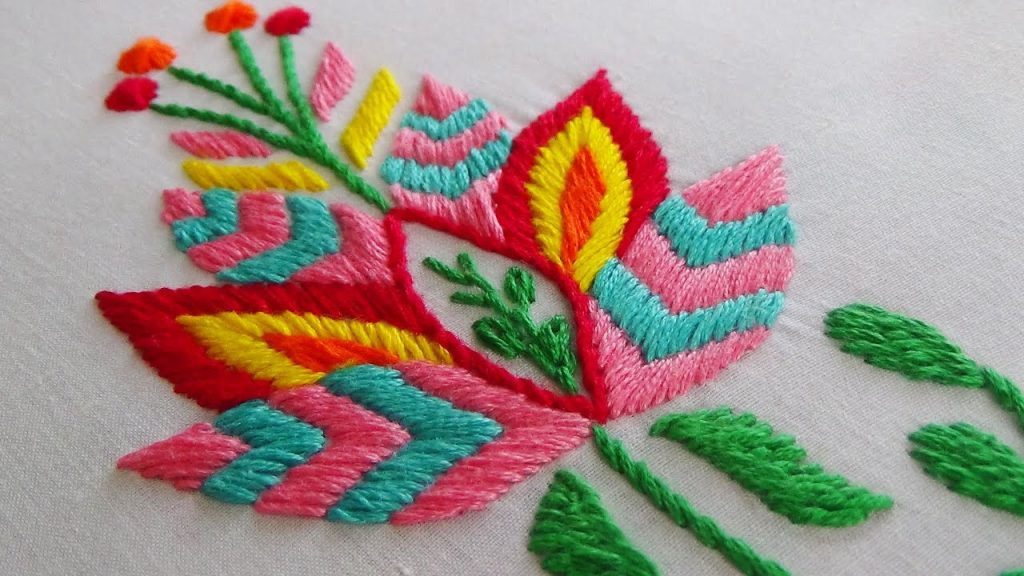
Women also created religious Phulkari embroidery designs to signify their agency and understanding of religion through their craft. The ‘Darshan Dwar’ Phulkari embroidery has a deliberate error that acts as a repellent for evil spirits and there is also a belief that something made for God cannot be made in perfection as that is only something God can do. Phulkari embroidery reflects Punjabi women performing day-to-day activities, a woman spinning the wheel, some dressed in traditional attire, some making food, etc. It is also reflective of the world they view around themselves. Newer Phulkaris reflect the modern and contemporary societal changes in the piece such as railways, aeroplanes, and changing landscapes.
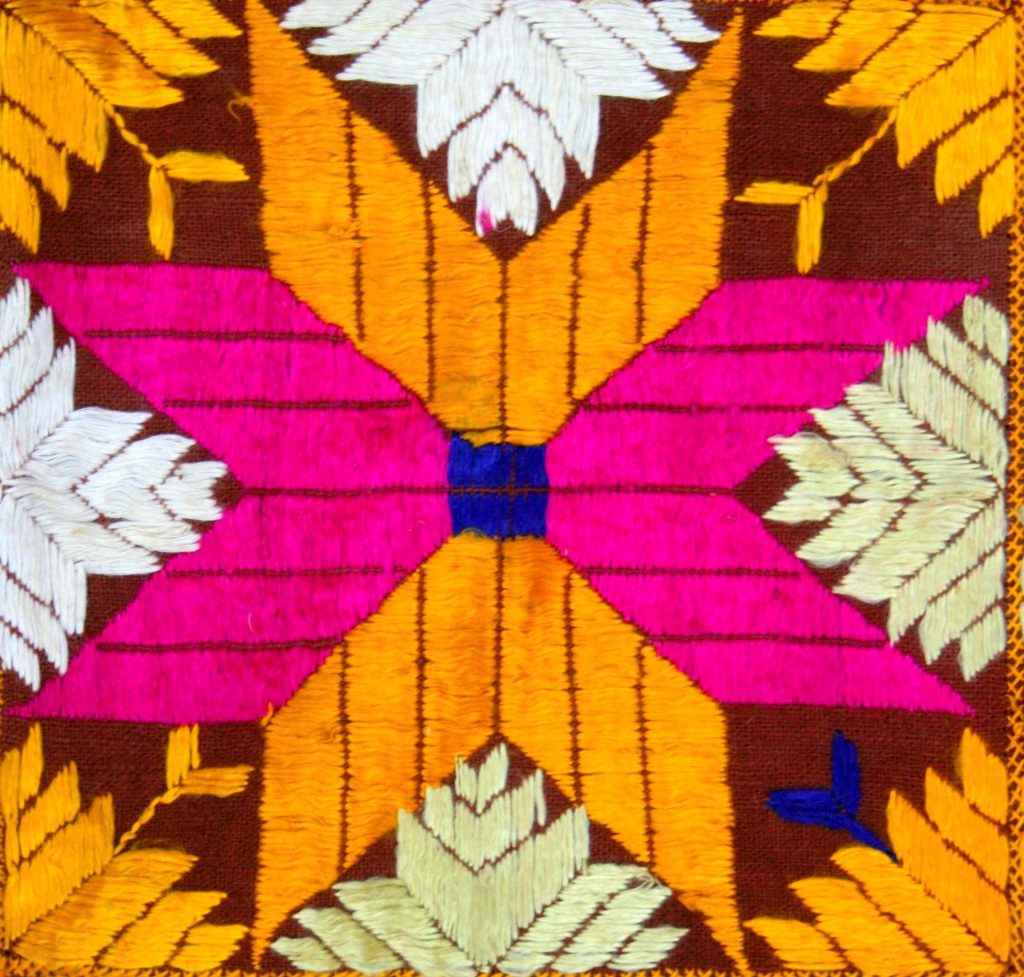
Can Phulkari Embroidery Stand the Test of Time?
Phulkari-making dwindled post-partition in the country. With the advent of machine-made Phulkari embroidery being sold for cheaper prices, the customers chose the latter. These led to only a few families in the state of Punjab actually sitting down together in ‘Trinjan’ and spinning the cotton yarn and making coarse ‘khaddar’ as well as embroidering together.
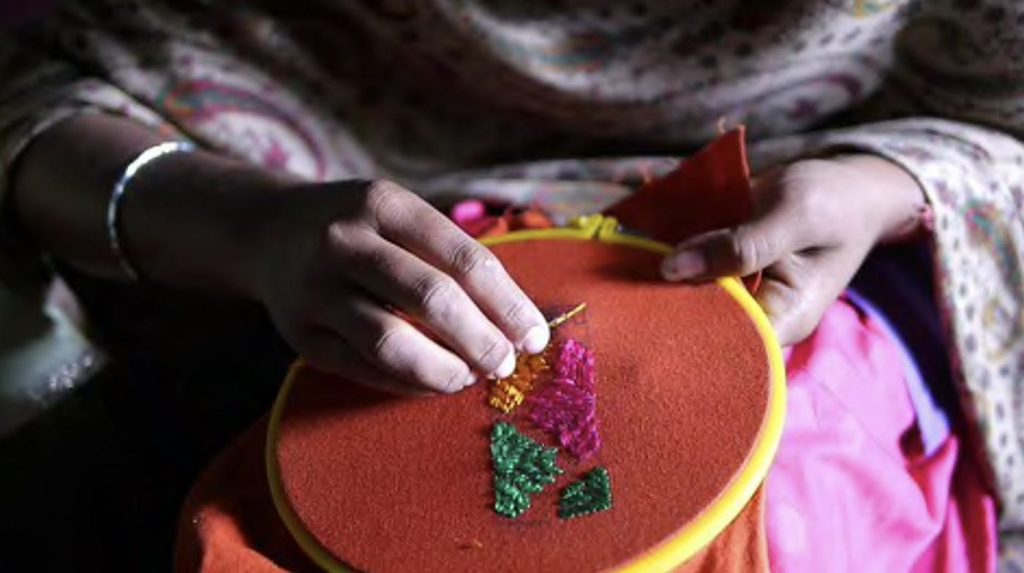
Over the years many women-led enterprises, designers, and artisan clusters have tried to revive Phulkari embroidery designs. One such example is that of ‘Virsā — The Heritage,’ a mother-daughter enterprise, the duo had a vision of putting original Phulkari tapestries in museums and reviving the traditional method of making them by visiting artisans in Punjab.
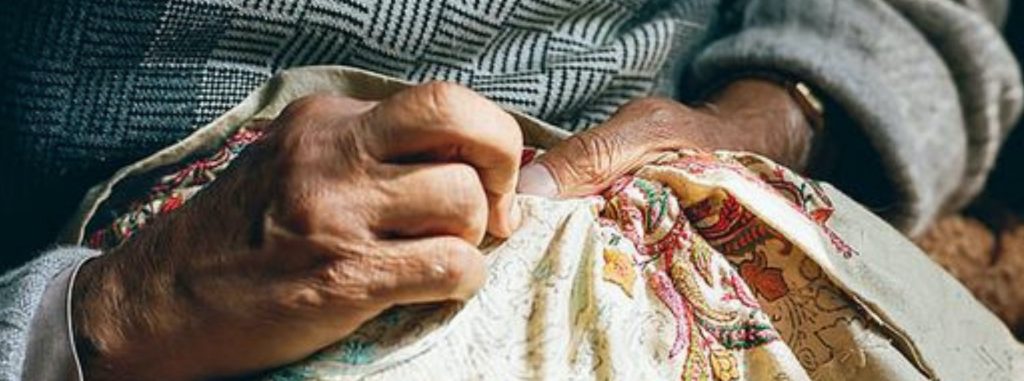
“Phulkari was but a natural choice as it’s one of the most traditional, pre-eminent handicrafts of Punjab and also one that needs the most assistance. Often, assistance and investment in real handcrafted Phulkari go hand-in-hand with investing in the lives of rural Punjabi women.” shares Nivi. Virsā also aimed at empowering the rural women artisans, with its primary focus “create an ecosystem and opportunity of empowerment, profit, and healthcare assistance for rural Punjabi Phulkari artisans” as stated in Your Story. The revival of lost Phulkari embroidery motifs, patterns, and designs is a key component of the Virsā enterprise. The initiative has to date held multiple exhibitions in the United States of America and launched its coffee table book.
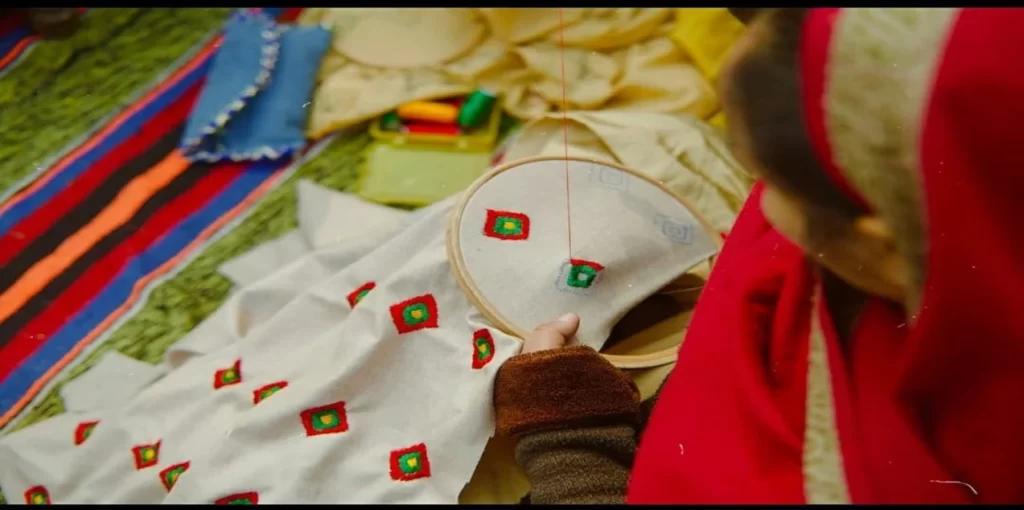
Phulkari embroidery motifs stand as a testament to women’s ingenuity and their hard and handy work. It reflects their agency to pick up something small and pale and make it into something beautiful despite the patriarchal restrictions. They found a needle as a tool to stitch their truths and embroider their understanding of the world. They carefully utilised their available resources, employed economic means of production and managed to creatively pass time, led a community-based craft and gave wings to their artistic visions through Phulkari. The Phulkari embroidery dupatta is more than simply a veil to cover oneself, it serves as a canvas for women’s expression and creative urges.
Image Courtesy – Sooti Syahi

Contributor



